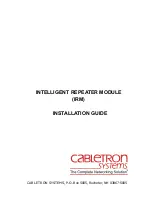
Osburn
Matrix
Inbuilt
Installation
and
Operation
Manual
______________________________________________________________________________
25
5.1.3
REPLACING
THE
DOOR
GASKET
It
is
important
to
maintain
the
gasket
in
good
condition.
After
a
year
or
more
of
use,
the
door
gasket
will
compress
and
become
hard,
which
may
allow
air
to
leak
past
it.
You
can
test
the
condition
of
the
door
gasket
by
closing
and
latching
the
door
on
a
strip
of
paper.
Test
all
around
the
door.
If
the
paper
slips
out
easily
anywhere,
it
is
time
to
replace
the
gasket.
Use
the
correct
replacement
gasket
that
you
can
purchase
from
your
retailer.
The
diameter
and
density
of
the
gasket
is
important
to
getting
a
good
seal.
Place
the
door
face
‐
down
on
something
soft
like
a
cushion
of
rags
or
piece
of
carpet.
Remove
the
old
gasket
from
the
door
by
pulling
and
prying
it
out
with
an
old
screw
driver.
Then
use
the
screwdriver
to
scrape
the
old
gasket
adhesive
from
the
door.
Now
run
a
6
mm
(1/4”)
bead
of
high
temperature
silicone
in
the
door
gasket
groove.
Starting
from
the
middle
of
the
hinge
side,
press
the
gasket
into
the
groove.
Do
not
stretch
the
gasket
as
you
place
it.
Leave
the
gasket
about
12
mm
(1/2”)
long
when
you
cut
it
and
press
the
end
into
the
groove.
Tuck
any
loose
fibres
under
the
gasket
and
into
the
silicone.
Close
the
door
and
do
not
use
the
wood
inbuilt
for
24
hours.
5.1.4
REPLACING
THE
GLASS
GASKET
AND/OR
THE
GLASS
It
is
a
good
idea
to
replace
the
glass
gasket
when
the
door
gasket
is
replaced.
The
gasket
is
flat,
adhesive
‐
backed,
woven
fibreglass.
Remove
the
glass
retaining
screws
(A)
and
clips
(B)
then
both
metal
frames
(C)
that
holds
the
glass
to
the
door
frame
(E).
Lift
out
the
glass
(D)
and
pull
off
the
old
gasket.
This
is
a
good
time
to
clean
the
glass
thoroughly.
















































